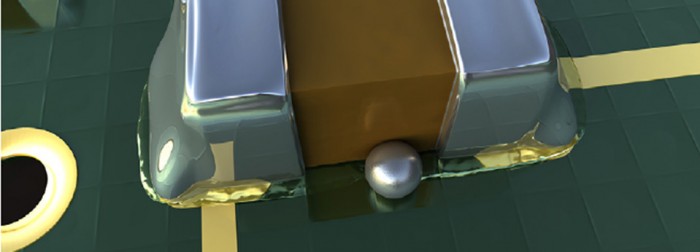Phil Zarrow: This video is for engineers challenged by voiding in die-attach applications. It will cover causes and methods to Avoid the Void®. Andy, with regard to voids in die-attachment. What causes them?
Andy C. Mackie, PhD, MSc: First of all, soldering is a phase inversion process, that the solid soldering material melts, and then the fluid materials, which previously were present as the continuous phase, now become the discontinuous phase. They become potentially bubbles of voids within the reflow solder itself, so that you have an entrapment of these kinds of holes within the solder matrix. Thermodynamics tells you that from the surface tension of the solder, even the high lead solders are fairly high surface statutes.
If you want to minimize the free energy of the system, you want to eliminate the void to eliminate the surface area that is there, and release the energy. What that means is, there's always something that pins the void in place. That's why this kind of phrase is about pinning the void in a specific location. What is it that's keeping the void there?
If you look at a cross section through a void, under SEM, for example, you'll see that they're mostly gas, or vapor, and there may be a little of flux, or some other foreign material in there, but it's mostly a gas of some kind that's in there. That gives you a clue as to what's actually forming the void. The second question is, what's keeping that void in place?
Phil Zarrow: With that in mind, what are some of the methodologies, or approaches towards mitigating voids in die-attach?
Andy C. Mackie, PhD, MSc: You want to really eliminate whatever is pinning the void in place. That means giving good solderability, so you can, for example, use a change in flux. We know that one of our fluxes gives a much better voiding performance than one other flux. We can use a vacuum reflow. In fact, that's becoming a standard form of reflow for many IGBT modules, where those voids are very, very, critical. You can change a reflow profile, the reflow atmosphere, particularly, the oxygen level, where the reflow atmosphere is very critical.
One thing that's becoming really concerning for thinned die, particularly, very large, thinned die is, that the bending of the die itself, can actually entrap air under the die, and that can cause problems with eliminating that, and really it's only vacuum that will remove the majority of that bubble.
Phil Zarrow: Andy, where can we go to find out more information on how to Avoid the Void in die-attach?
Andy C. Mackie, PhD, MSc: You can Avoid the Void by going to www.indium.com. We have a lot of information there, blogs, papers, and so on. I recommend that as the first estimation for anybody looking for information.
Phil Zarrow: Andy, thank you very much.
Andy C. Mackie, PhD, MSc: Phil, my pleasure.
Keywords: indium, Indium Corporation, void, voiding, voids, Avoid the Void®, die-attach, soldering, SEM, reflow, Andy Mackie, voiding performance, solderability, reflow solder, die-attachment


